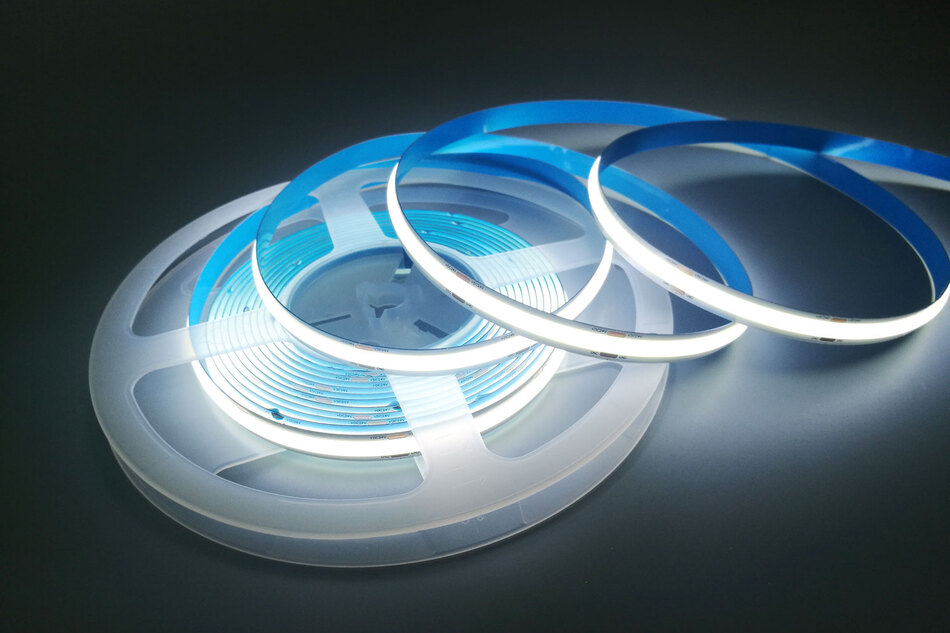Is More LED Chips Better for COB LED Strips

Introduction:
When it comes to COB (Chip-on-Board) LED strips, you might wonder whether having more LED chips is always better. In this detailed and professional article, we will explore the implications of LED chip quantity in COB LED strips and provide a comprehensive explanation.
1. Understanding COB LED Strips:
COB LED strips consist of multiple LED chips mounted directly on a single circuit board. The chips are closely packed, providing high-density illumination. The number of LED chips on a COB LED strip can vary depending on the design and application.
2. Illumination Intensity and Uniformity:
Having more LED chips on a COB LED strip can enhance the illumination intensity. With increased chip density, the light output per unit length of the strip is higher, resulting in brighter illumination. Additionally, a higher LED chip count can contribute to better light uniformity, minimizing dark spots or uneven lighting.
3. Heat Dissipation:
One consideration when it comes to the number of LED chips is heat dissipation. As more LED chips are packed closely together, heat generation can increase. Adequate heat dissipation is crucial to maintain the longevity and performance of the LED strip. It is essential to ensure proper heat sinking measures and ventilation when using COB LED strips with a higher LED chip count.
4. Power Consumption and Efficiency:
The number of LED chips on a COB LED strip can affect its power consumption and energy efficiency. More LED chips typically require a higher wattage to operate. However, advancements in LED technology have led to the development of efficient COB LED chips that offer higher lumen output while consuming less power. It is crucial to consider the specific chip specifications and efficiency ratings to determine the optimal LED chip count for a desired level of brightness and energy efficiency.
5. Application Considerations:
The desired application and lighting requirements play a significant role in determining the ideal LED chip count for a COB LED strip. Different applications may have varying needs in terms of brightness, light distribution, and power consumption. It is important to assess the specific lighting requirements of the application and select the appropriate LED chip count accordingly.
6. Balancing Factors:
When deciding on the LED chip count for a COB LED strip, it is crucial to strike a balance between brightness, heat dissipation, power consumption, and cost. More LED chips can provide higher brightness, but it may also result in increased heat generation and power consumption. Therefore, a careful evaluation of the specific application's needs, budget, and technical considerations is essential to determine the optimal LED chip count.
Conclusion:
In conclusion, the question of whether more LED chips are better for COB LED strips depends on various factors such as illumination intensity, uniformity, heat dissipation, power consumption, and specific application requirements. Achieving the right balance between these factors is crucial to ensure optimal performance and efficiency. It is recommended to consult with lighting professionals or manufacturers to determine the most suitable LED chip count for your specific lighting needs.





